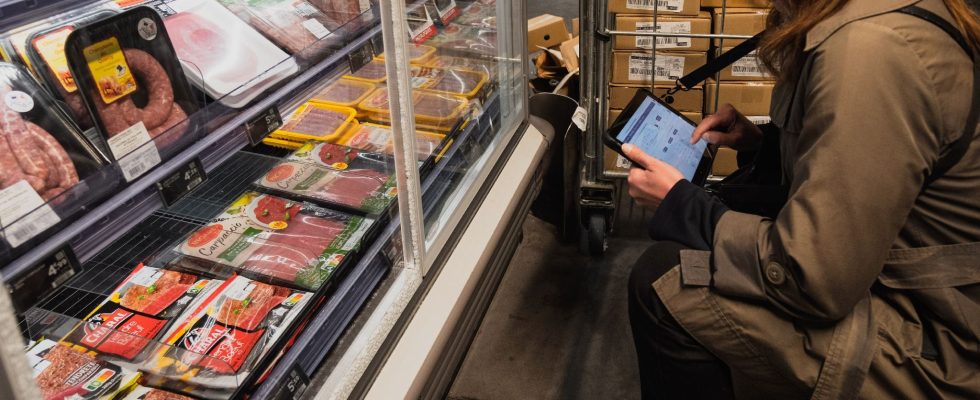It is a technique increasingly used by manufacturers of consumer products, by agro-industrialists and even distributors to increase their margins. Shrinkflation, from the English verb “shrink” – to shrink – refers to a practice aimed at reducing the quantities of products sold, without lowering the price, or even increasing it. The French government wishes to fight against this disguised inflation, and has submitted to Brussels a draft decree forcing supermarkets to further explain these price variations.
The Ministry of the Economy is working on a draft decree by March “to respond to consumers’ demand to be better informed in the event of shrinkflation on certain products”, indicated Tuesday the office of the Minister for Commerce Olivia Grégoire . Failing to be able to lower prices, the objective is to avoid duping consumers. The order is submitted to Brussels to check compliance with a 2015 European directive on the transparency of technical rules.
Mention of the decrease in quantities
This practice, which also exists in restaurants (a slightly lighter steak, or a few fewer fries, for the same price), is legal provided that the mention of the weight of the food is modified. This is not necessarily to deceive the consumer: it may be to align with the competition or to avoid crossing a price threshold such that it would turn the buyer away from the product.
The distributor Carrefour, for example, had drastically reduced the quantities of its “first price” vegetables to stay below 1 euro, the media recalled in December 60 million consumersevoking going from three to two salads or reducing the potato fillet by a third.
The government plans to require supermarkets to include, on references which have been subject to a reduction in portions, the words “for this product, the quantity sold has increased from X to Y and its price at (specify ‘unit of measurement concerned) increased by…% or…€”, according to the draft decree consulted on Monday. This notice must be placed “directly on the packaging or on a label attached to or placed near this product, in a visible, readable manner”, the text further specifies.
“Not the role of stores”
The draft decree has been submitted for opinion to the European Commission, indicates Olivia Grégoire’s office, confirming information from the specialized media LSA. “If the Commission makes no comments on the notified draft, then publication in the Official Journal may take place at the end of March 2024.”
“If a decree comes out, we will respect it and apply it but we regret it,” reacted the boss of the 4th French distributor, Système U, Dominique Schelcher, on France Inter. “It is the manufacturer who knows that his packaging has been reduced, that the recipe has been called into question,” he said, fearing “a waste of time” for the in-store teams.
Difficult to measure
In mid-December, distribution sector specialist Philippe Goetzmann published an opinion with the Jean Jaurès foundation on this practice of reducing quantities. The specialist recalled that “the prices are free, as are the weights” and that reductions in quantity are “generally accompanied by changes in the recipe”. How then can we know what constitutes food “innovation” – a change in recipe, for example with less sugar or salt – and what is just a hidden price increase?
The case recently arose concerning the famous Kiri processed cheese: the portion lost 2 grams in 2022 following a change in recipe, “more natural, without additives” and made in France using French milk, its manufacturer, the agro-industrialist Bel, then pleaded. In any case, the measure does not seem likely to bring down prices on the shelves. Prices have risen by more than 20% on average in food in two years.
